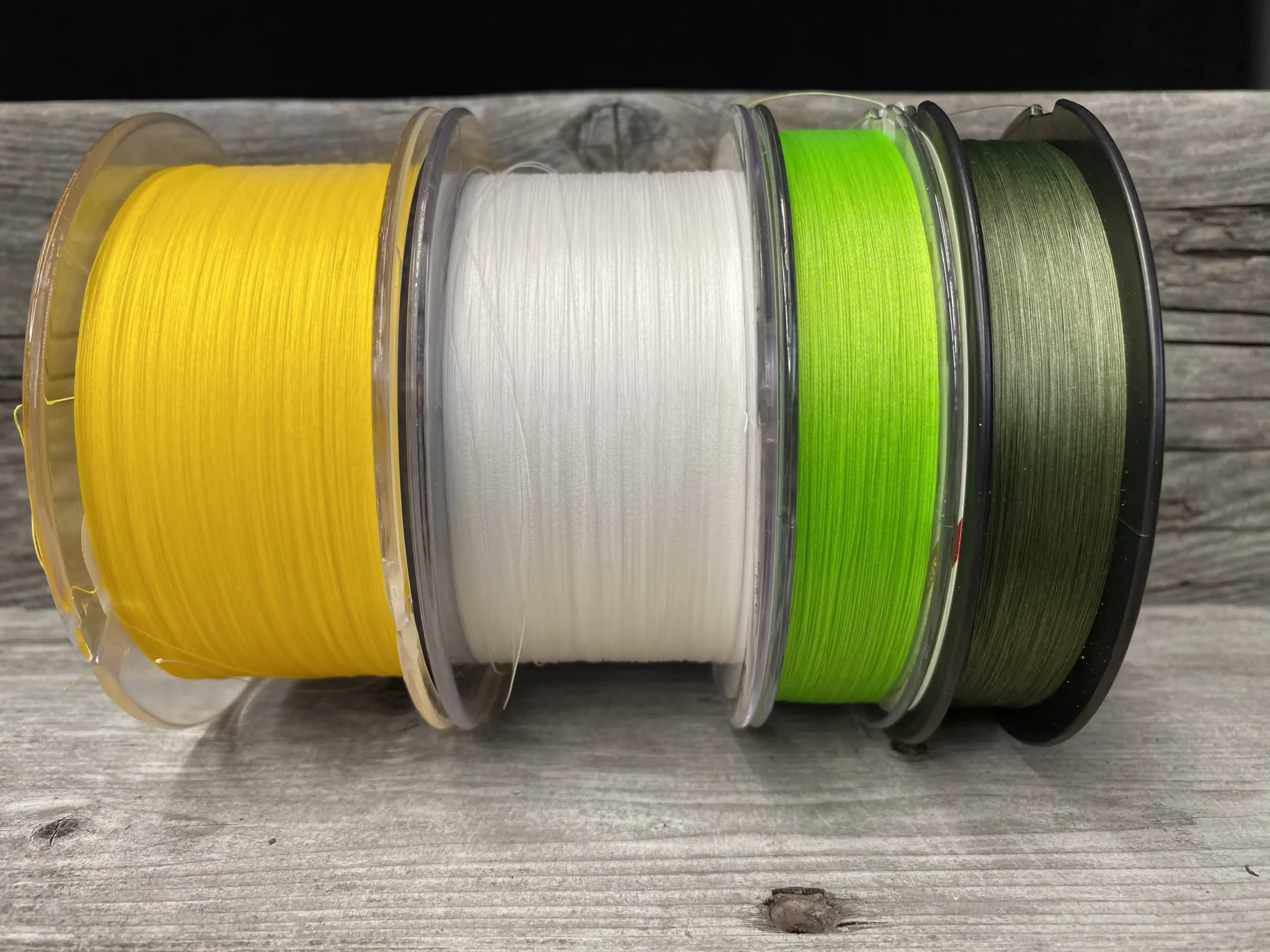The Rapala Jigging Rap was initially designed for ice fishing but has become one of the best open-water lures for crappie and walleye thanks to its fast sink rate and erratic action when jigged. More quietly, it’s been an undercover bait for savvy bass anglers from deep California reservoirs to the highland reservoirs of the Ozarks and beyond. Wired2fish re-connects with Cody Huff to expand his original deep water jigging winter bass how-to video. Huff focuses the content on how to fish the Jigging Rap with Garmin LiveScope and conventional 2D sonar, the best size and color Jigging Raps, and his go-to rod, reel, and line setup for the job. * Featured gear used listed at the bottom.
WINTER BASS LOCATION
Forage such as shad commonly form huge schools in the middle creek arm drains, and bass and other gamefish follow. Targeting these fish requires using your electronics to find and get a lure in front of them. Huff’s program involves using a combination of 2D and forward-facing sonar to locate productive areas, which means a lot of shad and bass on the sonar. Start by idling around these areas, and then take to the bow with a Jigging Rap when you’ve found them.
HOW TO FISH THE JIGGING RAP IN OPEN WATER
Most commonly thought of as a vertical presentation, walleye anglers have long been casting the Jigging Rap. Huff does the same with casts to the fish when used with forward-facing sonar. The heavy #9 Jigging Rap (7/8-ounce) sinks fast and true, which is key to getting on the bass with small strike windows before they move. Huff stops the bait just above the fish (they prefer feeding up) and starts by engaging the Jigging Rap with sharp snaps of the rod. The lure comes alive with an erratic side-to-side darting action that triggers all gamefish species. Like jerkbait fishing, adjust your presentation to the fish’s mood. If the bass don’t respond to an aggressive darting action, hold the bait and shake it in place – they usually can’t resist.
WHAT SIZE AND COLOR JIGGING RAP FOR BASS
Huff goes straight to the heavy metal. He prefers the W9 Jigging Rap almost exclusively, a sizable profile 3-1/2 inch bait that weighs a stout 7/8 ounce.
With a weight-forward design, the lure falls nose down fast and accurately – think of it as a lawn dart on the water! Huff always uses a shad-imitating color, but adjust to your primary forage species. He alternates between sold and chrome colors, favoring solid on dark days or low-light hours, and chrome varieties in clear water or sun conditions.
HOW TO USE FORWARD-FACING SONAR FOR OPEN-WATER BASS
You need to see fish and your bait simultaneously on forward-facing sonar to be fully effective with this program. Keep the fish in front of the boat to make accurate casts with LiveScope. Huff sets his distance range (x-axis) to 90 feet, which offers a wide search area and enough power to mark fish. He then expands his depth range (y-axis) to maximize the water column and produce the biggest bait and fish returns possible. Regardless of your fish finder, you must maximize your screen real estate for this cat-and-mouse application.
HOW TO USE 2D SONAR FOR OPEN-WATER BASS
Huff used 2D sonar for years, so no fret if you don’t have forward-facing sonar. The game changes to a vertical presentation, though, as it’s imperative to keep the lure in the sonar cone. Get on top of the bass and drop straight below your trolling motor transducer. You need to work fast and keep your line as straight as possible. Use the real-time screen on the right side of your LCD to track current interactions, with history developing as the screen proceeds left.
ROD, REEL, AND LINE SETUP
Although he will use casting gear and a light fluorocarbon for shallower fish, a 7-foot 2-inch medium action spinning rod spooled with a small diameter braided mainline to fluorocarbon leader is his go-to. An 8-pound braided mainline to an 8-pound fluorocarbon leader has significantly less drag than bigger diameter lines, which promotes getting the Jigging Rap to the bass at full speed.
The bottom line, this system is the best way to catch roaming open-water bass in deep water. Give it a try on your home waters. Chances are good that you’ll target under-pressured and overlooked bass, which means willing biters!
FEATURED FISHING GEAR (retail links)
- GLIDING JIG – Rapala Jigging Rap, size 9 (7/8 ounce), color – Helsinki Shad Buy at Omnia Fishing Buy at FishUSA Rapala Jigging Rap Review
- ROD – Bass Pros Shops Johnny Morris Platinum Signature Spinning Rod – JMP71MSF, Buy at Bass Pro Shops
- REEL – Bass Pro Shops Johnny Morris Platinum Signature Spinning Reel – JPT2000, Buy at Bass Pro Shops
- LINE (braided mainline) – Bass Pro Shops Excel Braid Fishing Line, 8-pound, Buy at Bass Pro Shops
- LINE (fluorocarbon leader) – Bass Pro Shops XPS KVD Signature Series 100% Fluorocarbon Fishing Line, 8-pound, Buy at Bass Pro Shops
- FISH FINDER – Garmin EchoMAP Ultra Fishfinders, Buy at Tackle Warehouse
- FORWARD-FACING SONAR (FFS) – Garmin LiveScope Plus System Bundle, Buy at Tackle Warehouse, Garmin LiveScope Plus Review
- FFS TURRET – RITE-HITE Turret, Buy at Amazon
- TROLLING MOTOR – Garmin Force Trolling Motor, Buy at Tackle Warehouse
- SUNGLASSES – Costa Del Mar Reefton Pro Sunglasses, Amber Lens, Buy at Tackle Warehouse
















